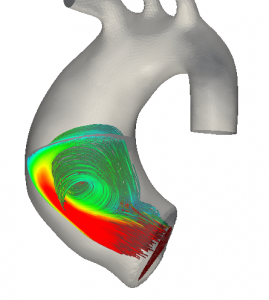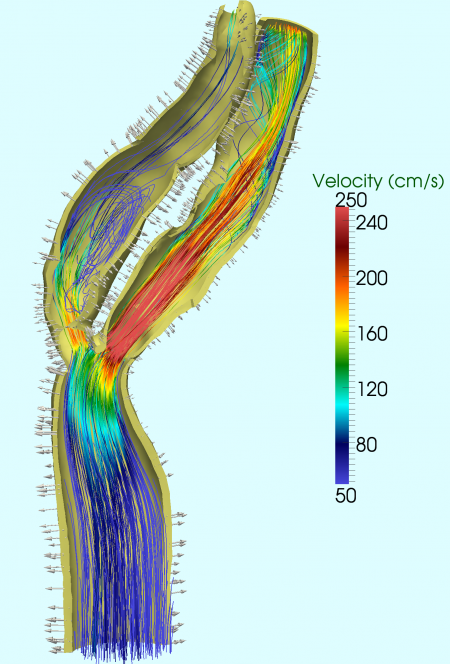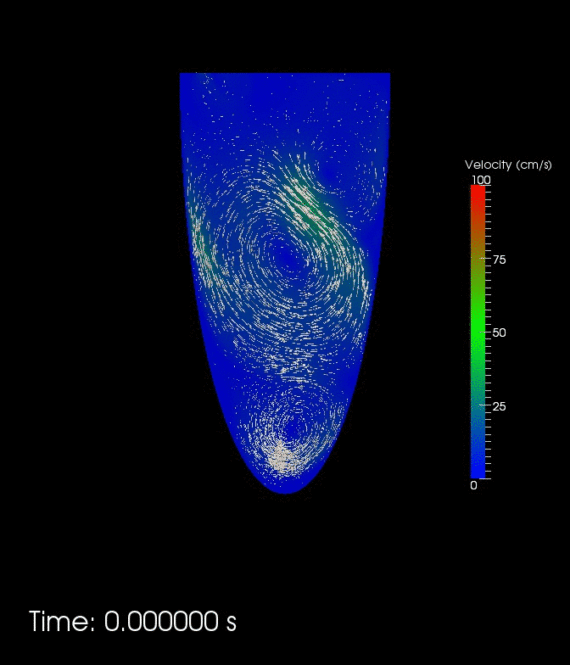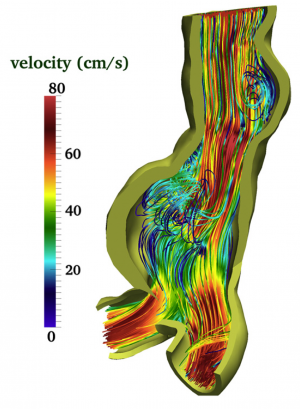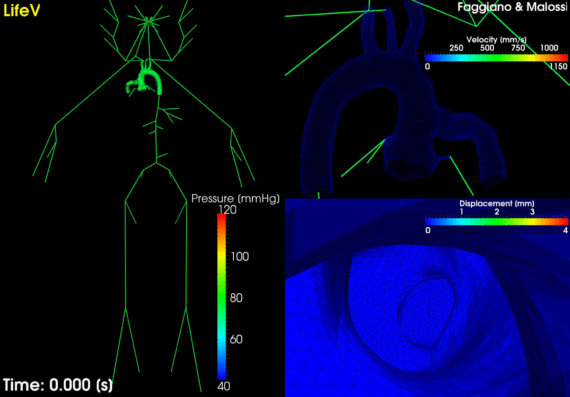Bicuspid aortic valve (BAV) is the most common congenital heart disease. Itis related to an increased prevalence of ascending aortic dilatation and aneurysm in normally functioning valvular regime when compared to tricuspid aortic valve (TAV). The pathogenesis of aortic dilatation in patients with BAV is nowadays uncertain. A first hypothesis postulates a genetic origin for these […]
Life Sciences
The carotid bifurcation is one of the preferential site of plaque formation, leading to vessel stenosis, and, possibly, to a complete obstruction of the vessel, formation of blood clots and breakage with embolization of fragments into the brain tissue. For these reasons, carotid endarterectomy (CEA), consisting in the surgical removal of the plaque, is intensively used in the clinical practice. The research […]
The abdominal aorta is one of the preferential site of aneurysm formation. Abdominal aortic aneurysms (AAA) represent 83 % of all non-cerebral aneurysms diagnosed in the United States. Untreated AAAs may rupture a severe clinical event associated with high rate of mortality and morbidity. The research at MOX focused on the fluid-dynamics in AAA. In […]
Electromechanical coupling Modeling the heart contraction leads to the solution of a coupled problem between the electrical model, which describes the propagation of the electrical signal that triggers the heart contraction, and the mechanical model, that describes the cardiac deformations. Beside the direct effect of the electrical activity in the mechanics, it is relevant to model also the feedback of the mechanics in the […]
Cardiac deformations are described by the equations of continuum mechanics, where the myocardium is considered as orthotropic, hyperelastic, and incompressible with passive properties defined by an exponential strain energy function. Several studies have underlined the mechanical importance of the alignment of cardiac cells and of the structure of collagen sheets. This is […]
The blood flow dynamics inside the human heart has been investigated till now by means of medical imaging techniques (echocardiography or MRI), as well as physical and computational models. However, the modelling of the fluid dynamics is still far from being satisfactory due to the complexity of the phenomena under analysis. The […]
A key aspect of the heart modeling is the study of electrical activity, that triggers the heart contraction. A simple model considered is the Eikonal equation which provides the activation times. In view of the electro-mechanical coupling more sophisticated models have been used, in particular the Monodomain and the Bidomain models, which allow to compute also […]
The interaction between the blood and the deformable artery leads to a very complex coupled problem The solution of this fluid-structure interaction problem has been addressed by means of partitioned algorithms, whose convergence properties are in general very poor due to the high added mass effect characterizing the haemodynamic regime. A […]
To model a complex arterial or venous network, the use of one-dimensional models (1D) allows to recover a global description of the pressure propagation with a reduced computational effort The research focused on the numerical discretization of single 1D compartments with different schemes, such as the Taylor-Galerkin method, on the treatment of different […]
The geometrical multiscale approach consists in the coupling of spatial heterogeneous models for the description of the cardiovascular system. Usually, one considers 3D models (either in compliant or rigid vessels) to describe the portion of the system where a detailed description is needed (e.g., the ascending aorta, the carotids, …), 1D models for the description of […]

